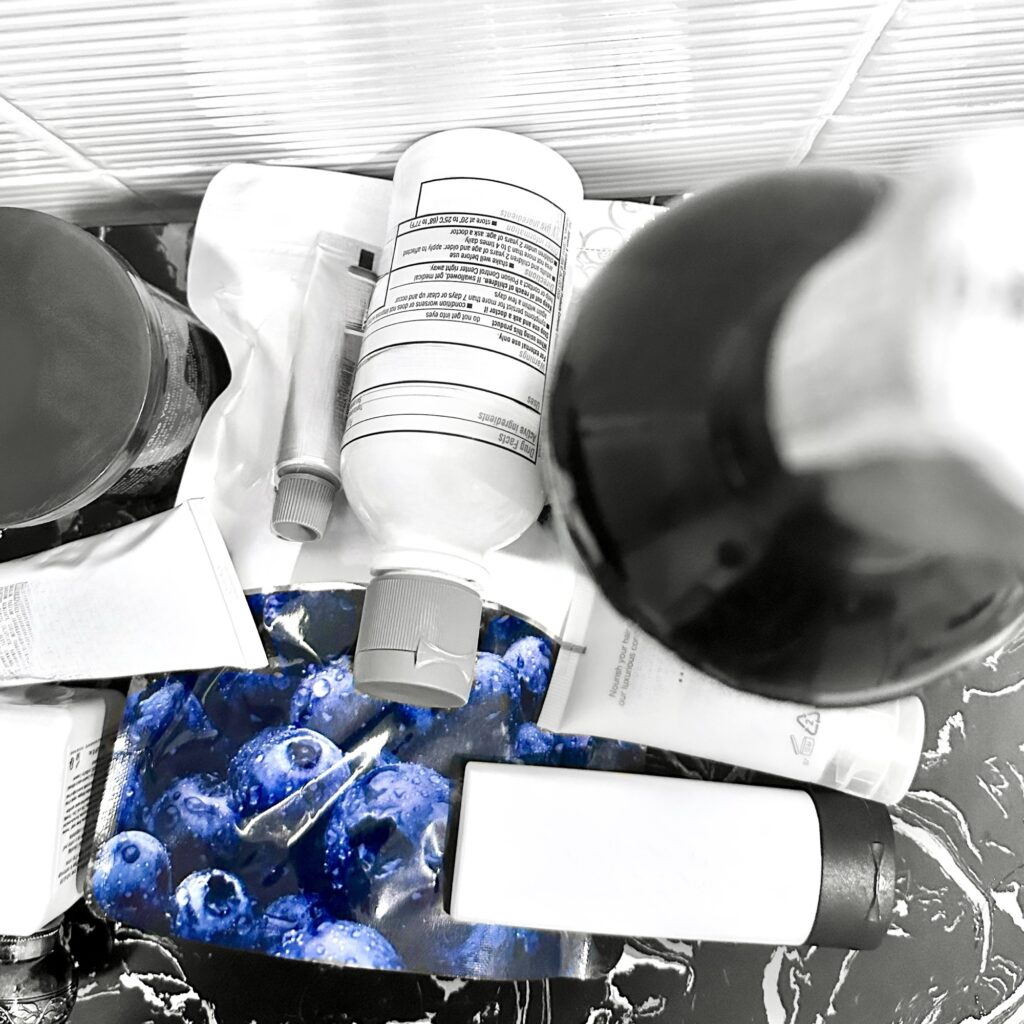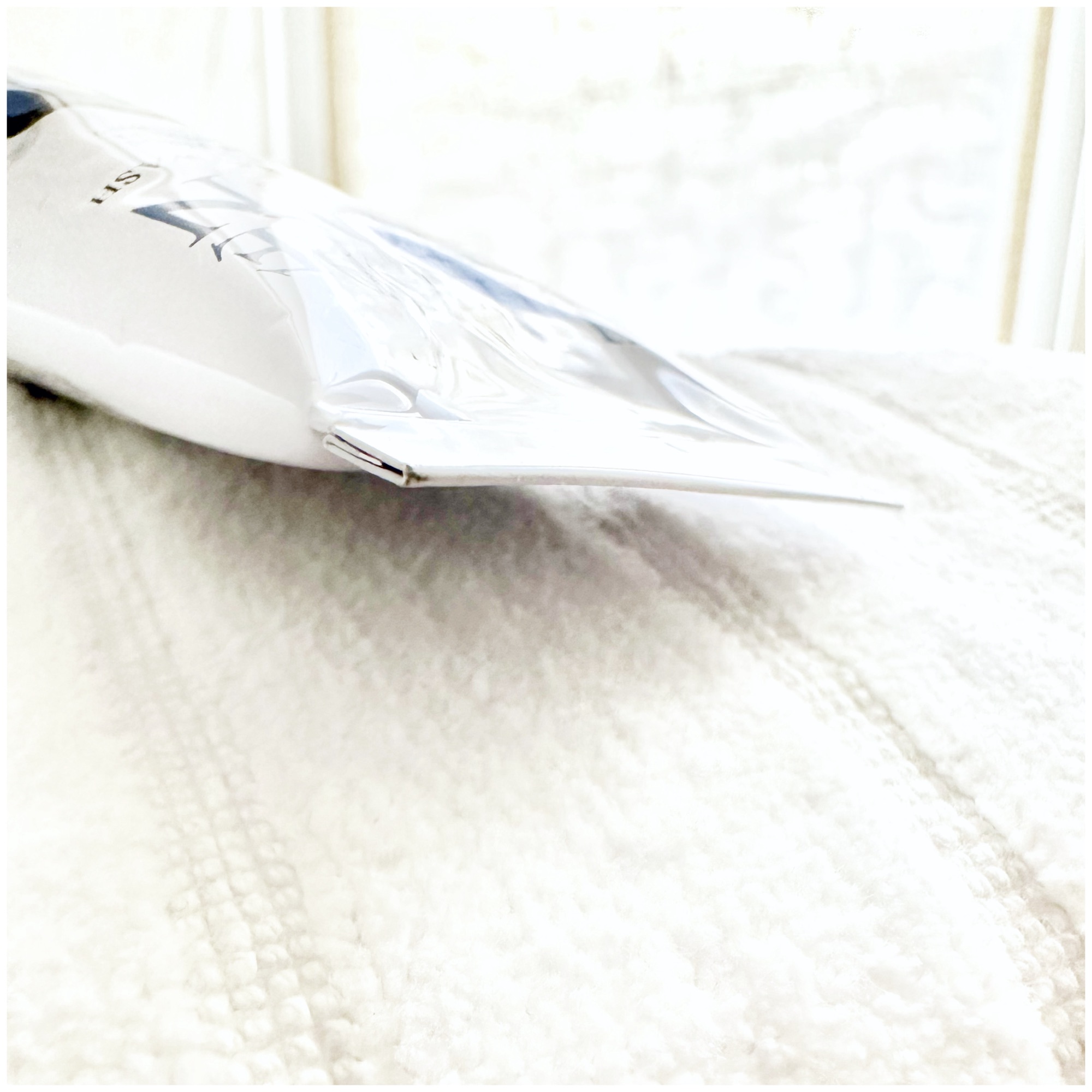Allergen
Sulfites (not sulfAtes)
Chosen by the American Contact Dermatitis Society as Allergen of the Year in 2024, no less!
SulfItes are not SulfAtes
First, an important clarification: sulfItes and sulfAtes are different. The simplest distinction is that while sulfates are basically bubble producers and not allergens (but can be irritants, especially at high concentrations), sulfites are preservatives and are top contact allergens. Sulfites and sulfates do not cross react with each other.
Ironically, sulfAtes have gotten bad press but are actually rather well tolerated by the skin — and many products labeled “sulfate-free” use alternatives to sulfates called “amido-amine” surfactants that are published allergens, such as oleAMIDOpropyl dimethylAMINE, cocAMIDE-DEA, CocAMIDOpropyl-Betaine, and CocAMIDOpropyl Hydroxysultaine.
SulfItes (sodium metabisulfite, disodium metabisulphite, or sodium pyrosulfite), on the other hand, are contact allergens. In addition to preserving a product, they can act as bleaches, stabilizers and antioxidants.
Where are sulfites found?
Sulfites can be added or occur naturally (such as in some wines) and can be found in lots of items, including:
- Antimicrobials and fungicides used in shipping food products and clothing
- Hair dye, hairspray and hair styling products
- Makeup
- Skincare like tanning lotion, deodorants, and sunscreen
- Foods like dried fruits, jams, baked goods, pickled foods, molasses, fruit juices, beer, wine, and potato chips
- Disinfection and sanitizing chemicals (industrial as well as products for home use)
- Leather goods
- Medications such as corticosteroids (topical steroids), eye drops, paracetamol, anesthetics, hemorrhoid preparations, antifungals, nasal solutions, and medicines containing adrenaline
- Photographic chemicals
- Swimming pool water
Testing and symptoms
Skin reactions tend to appear on the face (from products applied on the face or from hair and scalp products trickling down onto the face) and hands. The lips can also be a site of reactions after ingesting foods or wines with sulfites.
Important: skin and food allergies are not the same but some allergens (like sulfites) can cause both type IV (skin) and type I (dander, food, insect bites, etc.) reactions and systemic reactions. Sulfites are not yet commonly found in most patch test trays. If you have prick-, scratch-, or RAST-tested positive to sulfites, ask your dermatologist for a skin patch test that includes sulfites as well.
Management
A sulfite skin allergy can be difficult to confirm because sulfites are not yet common in most patch test trays, because they might not be easily visible in ingredients lists (they could be part of a raw material), and because they are in so many skin, hair, food, beverage, pharmaceutical, industrial and other types of products.
If you have sensitive skin that continues to react even after a patch test, careful allergen avoidance, and use of allergen-free products, ask your dermatologist about expanded patch testing that includes sulfites and other non-standard substances like aluminum, for example. Once identified, avoidance can be far more targeted and effective.
Subscribe to VMVinSKIN.com and our YouTube channel for more hypoallergenic tips and helpful “skinformation”!
If you have a history of sensitive skin…
…don’t guess! Random trial and error can cause more damage. Ask your dermatologist about a patch test.
To shop our selection of hypoallergenic products, visit vmvhypoallergenics.com. Need help? Ask us in the comments section below, or for more privacy (such as when asking us to customize recommendations for you based on your patch test results) contact us by email, or drop us a private message on Facebook.
For more:
- On the prevalence of skin allergies, see Skin Allergies Are More Common Than Ever.
- For the difference between irritant and allergic reactions, see It’s Complicated: Allergic Versus Irritant Reaction.
- For the difference between food, skin, and other types of reactions: see Skin & Food Allergies Are Not The Same Thing.
- On the differences between hypoallergenic, natural, and organic, check out Is Natural Hypoallergenic? and this video in our YouTube channel.
- To learn about the VH-Rating System and hypoallergenicity: What Is The Validated Hypoallergenic Rating System?
Main References:
Regularly published reports on the most common allergens by the North American Contact Dermatitis Group and European Surveillance System on Contact Allergies (based on over 28,000 patch test results, combined), plus other studies. Remember, we are all individuals — just because an ingredient is not on the most common allergen lists does not mean you cannot be sensitive to it, or that it will not become an allergen. These references, being based on so many patch test results, are a good basis but it is always best to get a patch test yourself.
- Ekstein SF, Warshaw EM. Sulfites: Allergen of the Year 2024. Dermatitis. 2024 Jan-Feb;35(1):6-12. doi: 10.1089/derm.2023.0154. Epub 2023 Aug 17. PMID: 37590472.
- Sulfites Selected as ACDS Allergen of the Year – Medscape – March 08, 2024
- DeKoven JG, Silverberg JI, Warshaw EM, Atwater AR, et al. North American Contact Dermatitis Group Patch Test Results: 2017-2018. Dermatitis. 2021 Mar-Apr 01;32(2):111-123.
- DeKoven JG, Warshaw EM, Zug KA, et al. North American Contact Dermatitis Group Patch Test Results: 2015-2016. Dermatitis. 2018 Nov/Dec;29(6):297-309.
- DeKoven JG, Warshaw EM, Belsito DV, et al. North American Contact Dermatitis Group Patch Test Results 2013-2014. Dermatitis. 2017 Jan/Feb;28(1):33-46.
- Warshaw, E.M., Maibach, H.I., Taylor, J.S., et al. North American contact dermatitis group patch test results: 2011-2012. Dermatitis. 2015; 26: 49-59.
- W Uter et al. The European Baseline Series in 10 European Countries, 2005/2006–Results of the European Surveillance System on Contact Allergies (ESSCA). Contact Dermatitis 61 (1), 31-38.7 2009.
- Wetter, DA et al. Results of patch testing to personal care product allergens in a standard series and a supplemental cosmetic series: An analysis of 945 patients from the Mayo Clinic Contact Dermatitis Group, 2000-2007. J Am Acad Dermatol. 2010 Nov;63(5):789-98.
- Warshaw EM, Buonomo M, DeKoven JG, et al. Importance of Supplemental Patch Testing Beyond a Screening Series for Patients With Dermatitis: The North American Contact Dermatitis Group Experience. JAMA Dermatol. 2021 Dec 1;157(12):1456-1465.
- Verallo-Rowell VM. The validated hypoallergenic cosmetics rating system: its 30-year evolution and effect on the prevalence of cosmetic reactions. Dermatitis 2011 Apr; 22(2):80-97.
- Ruby Pawankar et al. World Health Organization. White Book on Allergy 2011-2012 Executive Summary.
- Misery L et al. Sensitive skin in the American population: prevalence, clinical data, and role of the dermatologist. Int J Dermatol. 2011 Aug;50(8):961-7.
- Warshaw EM1, Maibach HI, Taylor JS, Sasseville D, DeKoven JG, Zirwas MJ, Fransway AF, Mathias CG, Zug KA, DeLeo VA, Fowler JF Jr, Marks JG, Pratt MD, Storrs FJ, Belsito DV. North American contact dermatitis group patch test results: 2011-2012.Dermatitis. 2015 Jan-Feb;26(1):49-59.
- Warshaw, E et al. Allergic patch test reactions associated with cosmetics: Retrospective analysis of cross-sectional data from the North American Contact Dermatitis Group, 2001-2004. J AmAcadDermatol 2009;60:23-38.
- Foliaki S et al. Antibiotic use in infancy and symptoms of asthma, rhinoconjunctivitis, and eczema in children 6 and 7 years old: International Study of Asthma and Allergies in Childhood Phase III. J Allergy Clin Immunol. 2009 Nov;124(5):982-9.
- Kei EF et al. Role of the gut microbiota in defining human health. Expert Rev Anti Infect Ther. 2010 Apr; 8(4): 435–454.
- Thavagnanam S et al. A meta-analysis of the association between Caesarean section and childhood asthma. Clin Exp Allergy. 2008;38(4):629–633.
- Marks JG, Belsito DV, DeLeo VA, et al. North American Contact Dermatitis Group patch-test results, 1998 to 2000. Am J Contact Dermat. 2003;14(2):59-62.
- Warshaw EM, Belsito DV, Taylor JS, et al. North American Contact Dermatitis Group patch test results: 2009 to 2010. Dermatitis. 2013;24(2):50-99.
- Verallo-Rowell V. M, Katalbas S.S. & Pangasinan J. P. Natural (Mineral, Vegetable, Coconut, Essential) Oils and Contact Dermatitis. Curr Allergy Asthma Rep 16,51 (2016) . https://doi.org/10.1007/s11882-016-0630-9.
- Park G, Oh DS, Lee MG, Lee CE, Kim YU. 6-Shogaol, an active compound of ginger, alleviates allergic dermatitis-like skin lesions via cytokine inhibition by activating the Nrf2 pathway. Toxicol Appl Pharmacol. 2016 Nov 1;310:51-59. doi: 10.1016/j.taap.2016.08.019. Epub 2016 Aug 22. PMID: 27562088.
- de Groot AC. Monographs in Contact Allergy, Volume II – Fragrances and Essential Oils. Boca Raton, FL: CRC Press Taylor & Francis Group; 2019.
- De Groot AC. Monographs in Contact Allergy Volume I. Non-Fragrance Allergens in Cosmetics (Part I and Part 2). Boca Raton, Fl, USA: CRC Press Taylor and Francis Group, 2018.
- Zhu TH, Suresh R, Warshaw E, et al. The Medical Necessity of Comprehensive Patch Testing. Dermatitis. 2018 May/Jun;29(3):107-111.
Want more great information on contact dermatitis? Check out the American Contact Dermatitis Society, Dermnet New Zealand, the Contact Dermatitis Institute, and your country’s contact dermatitis association.

Laura is our “dew”-good CEO at VMV Hypoallergenics and eldest daughter of VMV’s founding dermatologist-dermatopathologist. She has two children, Madison and Gavin, and works at VMV with her family and VMV’s signature “skinfatuated, skintellectual, skingenious” team. In addition to saving the world’s skin, Laura is passionate about health, cultural theory, human rights, happiness, and spreading goodness (like a VMV cream)!







